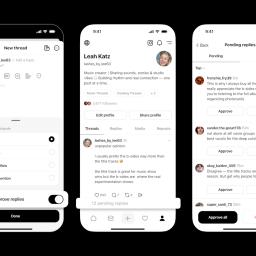 |
on (#714EF)
Social media conversations can be vastly more enjoyable when you pick and choose who you're talking with. Today, Threads is adding more controls that let users determine who can reply to their posts.One new feature is Reply Approvals, where the user will get a first look at responses before allowing them to appear publicly. The approval option can be turned on for individual posts rather than as a blanket policy for more granular control over replies. Threads is also adding new filters for viewing post replies. Now you can look at replies just from other Threads users you follow or sort them by mentions.Threads has already had a busy week. Earlier this week, the social network introduced its take on ephemeral "ghost" posts, akin to the limited-time visibility features on Instagram Stories and many other platforms. According to parent company Meta's third-quarter earnings call, Threads has grown to 150 million daily active users.This article originally appeared on Engadget at https://www.engadget.com/social-media/threads-is-making-it-easier-to-hide-replies-you-dont-like-154500456.html?src=rss
|
 Engadget is a web magazine with obsessive daily coverage of everything new in gadgets and consumer electronics
Engadget is a web magazine with obsessive daily coverage of everything new in gadgets and consumer electronics
| Link | https://www.engadget.com/ |
| Feed | https://www.engadget.com/rss.xml |
| Copyright | copyright Yahoo 2025 |
| Updated | 2025-12-26 05:17 |
 |
on (#713GF)
Amazon Games is winding down support for New World: Aeternum amid layoffs in the division and even deeper job cuts across its parent company. The game debuted on PC in 2021 and it landed on PS5 and Xbox Series X/S just over a year ago."After four years of steady content updates and a major new console release, we've reached a point where it is no longer sustainable to continue supporting the game with new content updates," Amazon Games wrote in a blog post. "The recently launched Season 10 and Nighthaven update will serve as the final content release for New World on PC and consoles. It is only after much consideration that we've reached this decision."Players will still be able to buy New World for now, and it will remain available to PlayStation Plus subscribers on the Extra and Premium tiers "until further notice." Amazon is making this month's Nighthaven expansion available to everyone for free too.The company said it will keep the game's servers up and running through 2026, "allowing our community time to continue their adventures in Aeternum." In terms of how long fans will be able to keep playing the game, Amazon said it will provide more details about "what to expect in the coming months." It pledged to "provide a minimum of six months' notice before making any changes that impact your ability to play New World: Aeternum."According to Bloomberg, Amazon told staff in a memo this week that, as part of widespread layoffs, it would dial back work on big-budget games, especially MMOs - a category that New World falls under. Updates for Throne and Liberty and Lost Ark - MMOS that Amazon publishes but are developed externally - will continue, the company confirmed to MassivelyOP.Amazon did not comment on the status of a Lord of the Rings MMO that's been in the works for a while. However, according to Eurogamer, a former Amazon senior gameplay engineer wrote in a since-deleted LinkedIn post that they were laid off alongside my incredibly talented peers on New World and our fledgling Lord of the Rings game (y'all would have loved it)."Amazon Games vice president Christoph Hartmann told me last year that Amazon started its big push into games with MMOs because it saw an opportunity. At the time, there weren't too many titles in that genre popping up. However, he noted that "we're evolving out of the MMOs" into other genres, hinting then that the division was changing focus. (Amazon's first AAA game, the free-to-play shooter Crucible, didn't last long after its debut in 2020.)New World is still a popular game. It got off to a blistering start, with a peak concurrent player count of 914,000 on Steam. This past weekend, it at one point had nearly 50,000 concurrent players on that platform. It was also one of the highest grossing games on Steam in 2021.And yet it seems that Amazon's games division will now focus more on Luna, the cloud service for which it rolled out an overhaul just last week. It reportedly plans to keep releasing casual and AI-focused games" for Luna, such as Courtroom Chaos: Starring Snoop Dogg, which puts an AI-generated version of the rapper in a Judge Judy-type role for court case-style debates between players. Amazon's most recent game for PC and consoles is King of Meat, a co-op dungeon-building platformer that has so far reached a peak Steam concurrent player count of just 253.Update, October 30 11:02AM ET: Updated with details about the Lord of the Rings game's possible cancellation.This article originally appeared on Engadget at https://www.engadget.com/amazon-is-winding-down-its-still-popular-new-world-mmo-amid-mass-layoffs-150500426.html?src=rss
|
 |
by Sam Chapman on (#714AW)
Norton Security has some reliable products, but its VPN isn't one of them. In my Norton VPN review, I argued that it's only really worthwhile if you can get a discount on it as part of a Norton 360 package - and even in that case, you should only use it for non-sensitive activities due to some holes in Norton's comprehensive privacy policy.That's a lot of conditions, so I'd understand if you're here because you've decided Norton VPN isn't for you. Read on to learn your options for cancelling this VPN, getting a refund and replacing it with a better provider.How to turn off Norton VPN auto-renewalThe simplest way to cancel Norton VPN is to stop your subscription from automatically renewing. That way, you'll have until your plan expires to look for a new VPN. Note that the steps below are the same no matter how you got Norton VPN, whether on its own or as part of Norton 360 - though they only apply if you subscribed through the Norton website, not an app store.
|
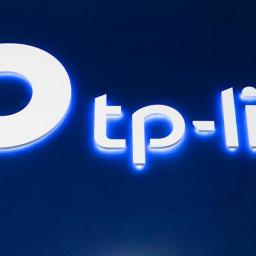 |
by Andre Revilla on (#714AX)
A number of US government agencies are backing a potential move by the Commerce Department to ban TP-Link routers, according to The Washington Post. Multiple sources familiar with internal deliberations spoke with the publication on the condition of anonymity, including a former senior Defense Department official.A months-long interagency process involving the Departments of Homeland Security, Justice and Defense took place this summer to consider the sweeping move. Investigations into the company stemming from national security concerns have been taking place since at least last year.At the heart of the potential ban is a concern that TP-Link retains ties to China, despite splitting from Chinese corporation TP-Link Technologies to become a standalone entity in 2022. A spokesperson for TP-Link denied any Chinese ties, saying "any adverse action against TP-Link would have no impact on China, but would harm an American company."US officials told The Washington Post they are concerned because under Chinese law, TP-Link must comply with Chinese intelligence agency requests and may even be pressured to push malicious software updates to its devices. US-based TP-Link Systems said the company is not subject to the direction of the PRC intel apparatus."TP-Link routers are among the most popular in the United States, with the company claiming 36 percent of US market share. Earlier this year however, former American cybersecurity official Rob Joyce testified before Congress that TP-Link's market share was roughly 60 percent, thanks in part to selling its equipment below cost in order to drive out competition.The potential ban of TP-Link products is another in a long list of bureaucratic moves or discussions that have come against the backdrop of trade negotiations between the US and China. While a potential breakthrough in these talks was achieved today, a source for The Washington Post said a ban on TP-Link products remains a bargaining chip for the administration.This article originally appeared on Engadget at https://www.engadget.com/cybersecurity/us-government-is-getting-closer-to-banning-tp-link-routers-145528317.html?src=rss
|
 |
by Matt Tate on (#714AY)
Donald Trump and China's leader, Xi Jinping, have agreed to a one-year pause on the punitive Trump-instated tariffs that are at the heart of the ongoing trade war between the two superpowers. Among the issues discussed when the two leaders met face-to-face in the South Korean city of Busan were China's chokehold on rare earth metals and the export restrictions on NVIDIA's AI chips.Trump had previously made some characteristically explosive threats that he would impose new 100 percent tariffs on imports from China as a retaliation to Xi's tightening grip on rare earths, the processing of which is almost entirely controlled by China. These materials are essential for manufacturing everything from smartphones and EVs to military equipment. As part of the (for now) temporary truce, China reportedly agreed to pause the new measures for the next 12 months in exchange for Trump lowering Chinese tariffs by 10 percent.According to The New York Times, Trump said he had discussed semiconductors during his talks with Xi, and did not rule out" the possibility of allowing NVIDIA to sell AI chips to China. The American company was allowed to resume selling its H20 chips in China in July after an initial ban earlier in the year, only for Beijing to reportedly respond by instructing its largest tech companies not to do business until a national security review had been completed. The leaders did not discuss the possible availability of Blackwell chips - NVIDIA's most advanced AI chip to date that is currently in development and possibly a motivating factor in China's apparent indifference to the H20 architecture - at their meeting in South Korea.There was also no resolution on TikTok and its future in the US. The last we heard, the Trump administration claimed to be close to agreement that would see the US gain majority ownership of the Chinese-owned social media giant where it was operating on home soil, but nothing has been finalized at the time of writing.This article originally appeared on Engadget at https://www.engadget.com/big-tech/us---china-trade-talks-see-one-year-pause-on-punitive-tariffs-140550358.html?src=rss
|
 |
by Matt Tate on (#714AZ)
LG and Ubisoft have teamed up to bring the motion-controlled rhythm game Just Dance Now to LG Smart TVs. The game will be available from December in the LG Gaming Portal for LG TV users in the US and Europe running webOS 22 or later, with no additional hardware required.Just Dance Now originally launched in 2014 as a mobile app for iOS and Android, before Ubisoft brought the game to Apple TV a year later. A main series spinoff aimed at people who don't own a console, Just Dance Now offers a library of hundreds of songs that span decades of music, which you'll be able to access for free for a limited time each day. If that just isn't enough dancing time to satisfy you, you can subscribe to one of Ubisoft's paid plans or purchase song packs.Just Dance Now was originally designed to be played using your phone as a controller, with your handset of choice functioning much like the Wii Remote did in the very first Just Dance game back in 2009. In the LG Gaming Portal version of the game, the motion-sensing LG Magic Remote becomes the peripheral, so you really don't need any extra gear.Ahead of the December launch, the Just Dance Now app will be available in beta, allowing players to try three songs on the first day, followed by one daily for the remainder for the two-week trial. Ubisoft hasn't announced the release date for the beta yet.The LG Gaming Portal is gradually becoming a viable alternative to a console for people with a casual interest in games. The cloud version of Xbox Game Pass joined the platform back in April, and the new and improved GeForce NOW app introduced up to 4K 120Hz game streams on LG TVs a few months ago.This article originally appeared on Engadget at https://www.engadget.com/entertainment/just-dance-now-is-coming-to-lg-smart-tvs-140042944.html?src=rss
|
 |
on (#714B0)
Many of us would rather forget all about the annus horribilis that was 2020, but there was at least one glaringly bright spot in that year, as Animal Crossing: New Horizons provided solace for many. Almost six years after the game's debut, Nintendo is hoping you'll return to your island - or start a new one - as a Switch 2 version with a bunch of upgrades will arrive on January 15. A free update is coming to both the Switch and Switch 2 versions of the game on the same day.A 12-minute video on Nintendo's YouTube channel went over a lot of the changes. The Switch 2 version has improved graphics with support for 4K visuals in TV mode. You'll be able to play with mouse controls via Joy-Con 2. Nintendo suggests that could make it easier for you to redecorate your home, make custom designs and create messages on the bulletin board. With the Switch 2's microphone, you'll be able to use your voice to call out to the residents of your island when you pick up the new megaphone item.The online features are getting upgrades. Up to 12 players will be able to hang out on the Switch 2 version, up from eight. There's support for the Switch 2 camera feature as well - you and your friends will be able to see each other's faces above your characters as you play.The Switch 2 edition of Animal Crossing: New Horizons will be available as physical and digital versions for $65. There's an upgrade pack for the original game, which will run you $5 - that's very reasonable, especially by Nintendo standards.As for folks who are sticking with the original Switch for the time being, there are a lot of new features coming via a free update. It brings a new locale to your island in the form of a hotel on the pier. You can decorate the room as you wish based on certain themes, and get souvenirs from the gift shop as a reward. You can pick up new outfits from the hotel too. The update will also add a dream world with up to three more islands for you and your friends to play and create in. There'll be fresh craftable items and the option to expand your home storage to up to 9,000 items (up from 5,000).The update will bring new collaborations to ANCH as well. You can pick up various Nintendo consoles as decorative items, and even play games on them if you have a Switch Online subscription. Lego items are coming to the game, along with a Legend of Zelda and Splatoon crossovers that work with select Amiibo. Of course, all of these additions will hit the Switch 2 version as well. I can imagine that a bunch of people are going to spend many more hours in ANCH in 2026.This article originally appeared on Engadget at https://www.engadget.com/gaming/nintendo/a-switch-2-edition-of-animal-crossing-new-horizons-will-land-on-january-15-135000347.html?src=rss
|
 |
by Mariella Moon on (#71488)
Google Doodle is featuring something special for gamers today: A tribute to Pac-Man's 45th anniversary, just in time for Halloween. For today and tomorrow, you'll be able to play four haunted-house mazes especially designed for the event by Pac-Man's parent company, Bandai Namco Entertainment. Like other games in the franchise, you'll have to control Pac-Man and eat all of the dots in a maze without being caught by a ghost.Yes, the Ghost Gang, with Blinky, Pinky, Inky and Clyde, is back for this event. The maze's design reflects the ghost' personalities, so you can move according to how you think each one will try to get you. Blinky the red ghost, for instance, tends to actively chase Pac-Man, while the others would corner him. If you grab a Power Pallet, you'll be able to activate a time-limited event wherein you can chase and eat the ghosts, as well.To play the game, simply go to the Google homepage on desktop or fire up the Google app on mobile, whether on Android or on iOS. On a PC, you control Pac-Man with your keyboard's arrow keys, while on mobile, you'll have to swipe or press and move your finger to change directions.This article originally appeared on Engadget at https://www.engadget.com/gaming/google-celebrates-pac-mans-45th-anniversary-with-a-halloween-doodle-133034299.html?src=rss
|
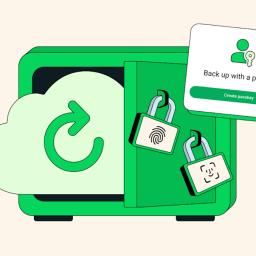 |
by Lawrence Bonk on (#71489)
WhatsApp is rolling out passkeys for backups, which is great news for anyone who has been on the platform for years. This will add another layer of security to anything that's been backed up, including chats, photos, voice notes and more.It's also convenient because passkeys don't force users to keep track of yet another password or encryption key. For the uninitiated, passkeys allow users to access personal data via biometric markers like fingerprints and face scans. However, these particular passkeys will also work with screen lock codes on certain devices.The feature is rolling out today, but it'll take a few weeks to reach every user. WhatsApp is a gigantic global platform. Once updated, folks can get started by heading to the Settings tab.This is just another layer of security for WhatsApp users, as these backups are already end-to-end encrypted. The platform has been doing that since 2021. It began offering passkey support just last year.This article originally appeared on Engadget at https://www.engadget.com/cybersecurity/whatsapp-will-let-you-use-passkeys-for-your-backups-130022640.html?src=rss
|
 |
by Mariella Moon on (#7148A)
OpenAI has rolled out the capability to create character cameos of your pets, doodles, original personas or even objects in the Sora app, which you can put in your videos. You can start the process by going to your profile page in the Sora app, tapping on the "Create cameo" button and then uploading a video of the character (or pet) you want the model to generate. The company says just a few seconds of footage are enough, and you can even use old Sora-generated videos as reference.You can then give your character a display name and describe how you want the model to animate it. In the example OpenAI uploaded, for instance, the description for a wicked green witch character reads: "She glides with a mysterious, whimsical grace, speaks in rhymes when casting spells, and her pointed hat always tilts as if listening to secrets on the wind." You can choose permissions for each character you create. Under the "Who can use this" permissions section, you can choose between several options: Only me, People I approve, Mutuals, Everyone and Everyone (excluding specific sets of users). Whenever you want to generate a Sora video with a cameo in it, you can just tag a specific character.Sora 2 launched with a cameo feature that lets you create an avatar of yourself, but this is a new application of the capability. Cameo, the app that allows users to buy videos from celebrities, just sued OpenAI over trademark violation by using the "cameo" name. It said that OpenAI's use of the word is likely to cause consumer confusion and dilute its brand. OpenAI disagreed "that anyone can claim exclusive ownership over the word 'cameo.'"In addition to character cameos, OpenAI has introduced "stitching," allowing you to stitch several clips together and connect videos. There's now also a leaderboard that shows the most cameod and most remixed videos.
|
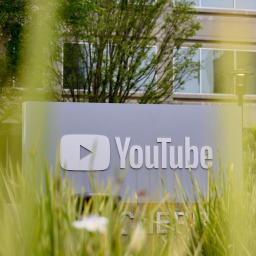 |
by Steve Dent on (#7148B)
As part of an AI-focused reorganization, YouTube CEO Neal Mohan told employees that it will offer voluntary buyouts, according to an internal company memo. At the same time, he emphasized that there would be no specific role eliminations as part of new structure."Looking to the future, the next frontier for YouTube is AI, which has the potential to transform every part of the platform," Mohan wrote. "We also understand some of you may be ready for a new challenge, so we've decided now is the right time to offer a voluntary exit Program."The restructuring is designed to help YouTube focus on fast-growing areas like AI while "driving faster decision making and execution," the memo states. To that end, the platform is organizing into three separate product organizations: viewer products, creator and community products, and subscription products.Viewer products will focus on the viewer experience by making improvements to search & discovery, engagement, the living room experience and "our foundation of responsibility." Creator and community products, meanwhile, is "driving creation through genAI tools, Shorts, Live and creator support. Subscription products, as you'd expect, will operate around subscription growth across Music, Premium and OTT (YouTube TV) platforms.Mohan noted that YouTube has been the number one streamer in the US for the last two years. So far, it has signed up 125 million Premium and Music subscribers, along with 8 million YouTube TV subs. The platform has paid out $100 billion to its ecosystem (presumably, creators and recording artists).YouTube isn't the only tech giant reducing headcount while citing AI as an impetus. Amazon recently announced that it had laid off 14,000 people, while citing the need to be "lean" due to transformative technology like AI. Meanwhile, YouTube parent Alphabet announced its first-ever $100 billion quarter, largely on the strength of cloud services and search.This article originally appeared on Engadget at https://www.engadget.com/big-tech/youtube-is-offering-employees-buyouts-as-part-of-an-ai-focused-reorganization-120047466.html?src=rss
|
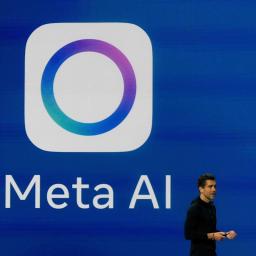 |
by Steve Dent on (#7145Q)
It looks like Meta's Vibes feed is just the start of the company's pivot toward AI slop. In an earnings call, CEO Mark Zuckerberg said that "we're going to add yet another huge corpus of content" to Meta's recommendation system, via AI's ability to create and remix content - so you're likely to see even more AI generated posts on Facebook and Instagram."Social media has gone through two eras so far. First was when all content was from friends, family, and accounts that you followed directly. The second was when we added all the creator content," he said, seemingly suggesting that AI content will be the third era.Zuckerberg added that recommendation systems that "deeply" understand AI content are "increasingly valuable" since they can "help you achieve your goals."He then nodded to Vibes, calling it an example of a new type of content enabled by AI. Retention on the feed "is looking good so far, and its usage keeps growing quickly week over week," he proclaimed. Furthermore, there are more opportunities to build "many more novel types of content aheads, as our new models become ready," Zuckerberg added. To put some numbers to Vibes takeup, Meta CFO Susan Li said that users have generated over 20 billion images in the feed to date.Meta has already introduced a number of AI features across its social media platforms. Those include in-app photo and video editing via text prompts directly in Instagram Stories, AI chatbots across WhatsApp, Messenger, and Instagram, and a standalone Meta AI app that includes an AI assistant and discovery feed.This article originally appeared on Engadget at https://www.engadget.com/social-media/meta-will-add-a-huge-corpus-of-ai-content-into-its-recommendation-system-113027353.html?src=rss
|
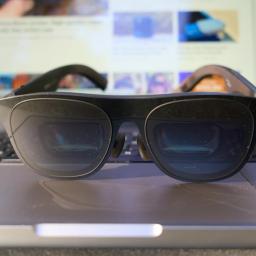 |
on (#7145R)
Forget Samsung's $1,800 Galaxy XR, the Android XR device I'm actually intrigued to see is Xreal's Project Aura, an evolution of the company's existing smart glasses. Instead of being an expensive and bulky headset like the Galaxy XR and Apple Vision Pro, Xreal's devices are like over-sized sunglasses that project a virtual display atop transparent lenses. I genuinely loved Xreal's $649 One Pro for its comfort, screen size and relative affordability.Now that I'm testing the M5-equipped Vision Pro (full review to come soon!), it's clearer than ever that Apple should replicate Xreal's winning formula. It'll be a long while before we'll ever see a smaller Vision Pro-like device under $1,000, but Apple could easily build a similar set of comfortable smart glasses that more people could actually afford. And if they worked like Xreal's glasses, they'd also be far more useful than something like Meta's $800 Ray-Ban Display, which only has a small screen for notifications and quick tasks like video chats.Xreal One Pro smart glassesDevindra Hardawar for EngadgetWhile we don't have any pricing details for Project Aura yet, given Xreal's history of delivering devices between $200 and $649, I'd bet they'll come in cheaper than the Galaxy XR. Xreal's existing hardware is less complex than the Vision Pro and Galaxy XR, with smaller displays, a more limited field of view and no built-in battery. Project Aura differs a bit with its tethered computing puck, which will be used to power Android XR and presumably hold a battery. That component alone could drive its price up to $1,000 - but hey, that's better than $1,800.During my time with the M5 Vision Pro, I couldn't help but imagine how Apple could bring visionOS to its own Xreal-like hardware, which I'll call the "Vision Air" for this thought experiment. The basic sunglasses design is easy enough to replicate, and I could see Apple leaning into lighter and more premium materials to make wearing the Vision Air even more comfortable than Xreal's devices. There's no doubt it would be lighter than the 1.6-pound Vision Pro, and since you'd still be seeing the real world, it also avoids the sense of being trapped in a dark VR headset.To power the Vision Air, Apple could repurpose the Vision Pro's battery pack and turn it into a computing puck like Project Aura's. It wouldn't need the full capabilities of the M5 chip, it would just have to be smart enough to juggle virtual windows, map objects in 3D space and run most visionOS apps. The Vision Air also wouldn't need the full array of cameras and sensors from the Vision Pro, just enough track your fingers and eyes.I could also see Apple matching, or even surpassing, Project Aura's 70-degree field of view, which is already a huge leap beyond the Xreal One Pro's 57-degree FOV. Xreal's earlier devices were severely limited by a small FOV, which meant that you could only see virtual screens through a tiny sliver. (That's a problem that also plagued early AR headsets like Microsoft's HoloLens.) While wearing the Xreal One Pro, though, I could see a huge 222-inch virtual display within my view. Pushing the FOV even higher would be even more immersive.In my review of the original Vision Pro, I wrote, "If Apple just sold a headset that virtualized your Mac's screen for $1,000 this well, I'd imagine creative professionals and power users would be all over it." That may be an achievable goal for the Vision Air, especially if it's not chasing total XR immersion. And even if the Apple tax pushed the price up to $1,500, it would still be more sensible than the Vision Pro's $3,500 cost.While I don't have high hopes for Android XR, its mere existence should be enough to push Apple to double-down on visionOS and deliver something people can actually afford. If Xreal can design comfortable and functional smart glasses for a fraction of the Vision Pro's cost, why can't Apple?This article originally appeared on Engadget at https://www.engadget.com/ar-vr/whats-next-for-vision-pro-apple-should-take-a-cue-from-xreals-smart-glasses-113000437.html?src=rss
|
 |
by Sam Chapman on (#7145S)
Proton, the company behind Proton VPN and other encrypted apps like Proton Mail and Proton Drive, just launched a new web page called the Data Breach Observatory that aims to make accurate cybercrime data more widely accessible. The Observatory is intended to be a continually updated report that records any data leak detected on the dark web, with information sourced from the underground data marketplaces themselves.The reason for the Observatory, according to Proton, is that too many studies of cyberattacks depend on organizations reporting when they've been hacked. A company might not make a data breach public for fear of backlash from customers, regulators or stockholders. Although it's impossible to tell how many breaches aren't reported, Proton believes it's a significant portion.Compounding the transparency problem, most stolen data is advertised and traded on dark web markets that are hard to trace without specialized knowledge, like how diamond thieves don't tend to fence their loot at above-board jewelry stores. In other words, while most people know that personal information is frequently stolen and leaked, it's very difficult to know how much data is getting stolen, how often breaches occur and who's buying and selling the goods.Proton's solution is to monitor the dark web itself, watching locations where data thieves go to advertise stolen information. By keeping an eye on these exchanges, Proton believes the Data Breach Observatory will be able to warn victims as early as possible, including before the targets themselves are aware of the leak. Making breach reports available in one place is also meant to educate the public about the actual size and scope of cybercrime, while making it harder for companies to keep quiet about getting hacked.Proton plans to update the Observatory in "near real time," working with a risk detection firm called Constella Intelligence. It remains to be seen whether they'll be able to keep up the workload - according to Proton's own research, around 1,571 data breaches have occurred in 2025 so far, compromising well over 100 billion records. A clearing house for reporting on all of those definitely sounds valuable, but at around five breaches a day, it'll be a busy page.This article originally appeared on Engadget at https://www.engadget.com/cybersecurity/proton-launches-data-breach-observatory-to-track-personal-info-leaks-110047833.html?src=rss
|
by Amy Skorheim on (#6AFH6)
Color is the buzziest feature in ereaders right now, but is it necessary? It makes the covers more fun, and readers of comics and graphic novels will appreciate the added hues (though they may be happier with an E Ink tablet for better image detail). Color is just one factor to consider when picking out the best ereader. The lights, screen quality, housing and buttons make a difference too. Then there's the software: Do you want to stay in the Kindle ecosystem or get a device that can handle lots of apps? We tested more than a dozen ereaders to come up with our recommendations. This guide also points out ways to get the most out of your new e-book companion once you pick your favorite.
 |
by Daniel Cooper on (#713Y5)
Rode's range of tiny, portable microphones are a mainstay for creators looking for crisp audio on their phone videos. The company knows that those using digital cameras probably want that same blend of portability and performance for their own footage. That's why it's launching the new Wireless Micro Camera Kit, which outputs audio over USB-C or via a 3.5mm line-in. As with the Wireless Micro, the new set includes a pair of microphones and a transmitter that all sit in a portable charging case. You'll also find a pair of furry wind screens should you need to film in less than favorable weather. But unlike that model, the receiver comes with both a cold shoe mount and a 1.1-inch AMOLED screen. That will let you configure the audio setup on the fly, plus you'll get battery data for all three units and an on-screen visualizer. Rode It would appear that Rode noticed user gripes that its own kit was being shown up by DJI's Mic Mini, which had a transmitter with its own 3.5mm jack and shoe mount for camera connection. In addition, Rode has added Bluetooth Direct Connect to the microphones so they'll connect to your iOS phone directly via the Rode Capture App. Which, like the 3.5mm, was a notable omission from the older hardware. In terms of battery life, Rode says the kit and the charging case will hold up to 21 hours of use before you need to head back to an outlet. Plus, to sweeten the deal, Rode is also throwing in one of its first-generation USB-C smartphone receivers into the package for free. Rode's Wireless Micro Camera Kit is available to purchase today for $149. This article originally appeared on Engadget at https://www.engadget.com/mobile/rodes-latest-wireless-microphones-now-work-with-digital-cameras-025338766.html?src=rss
|
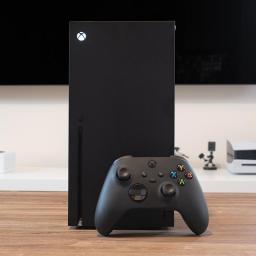 |
by Mariella Moon on (#713Y6)
It hasn't been a good year for Xbox so far. Microsoft has released its earnings report for the quarter ending on September 30, and it has revealed that its revenue from the Xbox hardware fell by 30 percent year-over-year. Take note that the revenue decline doesn't reflect any dip in sales caused by the console's $20-to-$70 price hike, since that took effect on October 3. Similarly, Microsoft only raised the price for its Game Pass Ultimate subscription from $20 to $30 in October.Meanwhile, revenue from Xbox content and services remained relatively unchanged from the same period last year. Microsoft says it saw growth from Xbox subscriptions and third-party content, but it was "partially offset" by the decline in first-party gaming content.The Xbox division was one of the most affected teams when Microsoft started cutting down its global workforce earlier this year, with the company cancelling games that were being developed for the console. Microsoft scrapped the modern reimagining of Perfect Dark, a first-person shooter from the year 2000, and even closed down the Xbox studio working on it. The company also cancelled Everwild, a project that had long been in development by Xbox studio Rare, also in the midst of its mass layoffs.Overall, Microsoft's $77.7 billion revenue was 17 percent higher compared to the same period last year, and its operating income was up by 22 percent. Microsoft CEO Satya Nadella posted a few highlights about the company's earnings call on X, mostly focusing on its AI efforts. He said that the company will increase its AI capacity by 80 percent this year and will double its data center footprint over the next two.
|
 |
by Danica Creahan,Liz Kocan on (#713KP)
The 2025 Fall Classic is tied up again after Game 4 between the Los Angeles Dodgers and the Toronto Blue Jays saw Toronto dominate to win 6-2. The World Series continues with one more game in Los Angeles tonight - Wednesday, Oct. 29 - at 8PM ET/5PM PT. The World Series odds favor the Dodgers ahead of tonight's game. Every 2025 MLB World Series game will air on Fox and Fox Deportes. Of course, Fox is a "free" over-the-air channel, so any affordable digital antenna will pull in the game if you live close enough to a local affiliate. But if that's not an option, here's a full rundown of how to watch the Dodgers vs. Blue Jays World Series, even without cable. How to watch the L.A. Dodgers vs. Toronto Blue Jays, Game 5 You can stream Fox on any live TV streaming service that airs Fox local stations, including DirecTV, Fubo and Hulu + Live TV. MLB World Series games will also be available on Fox's new streaming platform, Fox One. More ways to watch the 2025 World Series How to watch the MLB World Series from Canada: When is the Dodgers vs. Blue Jays game time? Game 5 of the Dodgers vs. Blue Jays World Series is tonight, Oct. 29 at 8PM ET/5PM PT. What channel is playing the Los Angeles Dodgers vs. Toronto Blue Jays? Every game in the 2025 World Series between the Los Angeles Dodgers and the Toronto Blue Jays, will air on Fox and Fox Deportes. When is the 2025 World Series? Game 5 of the World Series between the Dodgers and Blue Jays is scheduled for Oct. 29, 2025. Los Angeles Dodgers vs. Toronto Blue Jays World Series schedule All times Eastern. Series tied-2-2.
|
 |
by Will Shanklin on (#713V8)
Chalk this one up under "The most clever (alleged) legal sidesteps this side of Tony Soprano." On Wednesday, The Guardian published a report about a so-called "winking mechanism" regarding Israeli cloud computing contracts with Amazon and Google. The stipulation from 2021's Project Nimbus is said to require the US companies to send coded messages to Israel. According to the report, whenever Google or Amazon secretly complies with an overseas legal request for Israeli data, they're required to send money to Israel. The dollar amount indicates which country issued the request.The coding system reportedly involves country dialing prefixes. For example, if Google or Amazon hand over Israeli data to the US (dialing code +1), they would send Israel 1,000 shekels. For Italy (code +39), they would send 3,900 shekels. (Out of morbid curiosity, I discovered that the highest dialing code is Uzbekistan's +998.) There's reportedly even a failsafe: If a gag order prevents the companies from using the standard signal, they can notify Israel by sending 100,000 shekels.The Guardian says Microsoft, which bid for the Nimbus contract, lost out in part because it refused to accept some of Israel's terms.In a statement to Engadget, an Amazon spokesperson highlighted customer privacy. "We respect the privacy of our customers, and we do not discuss our relationship without their consent, or have visibility into their workloads," they wrote.The Amazon spokesperson denied that the company has any underhanded workarounds in place. "We have a rigorous global process for responding to lawful and binding orders for requests related to customer data," they said. "[Amazon Web Services] carefully reviews each request to assess any non-disclosure obligations, and we maintain confidentiality in accordance with applicable laws and regulations. While AWS does not disclose customer information in response to government demands unless we're absolutely required to do so, we recognize the legitimate needs of law enforcement agencies to investigate serious crimes. We do not have any processes in place to circumvent our confidentiality obligations on lawfully binding orders."Google also denied any wrongdoing. "The accusations in this reporting are false, and imply that we somehow were involved in illegal activity, which is absurd," a company spokesperson said. "As is common in public sector agreements, an RFP does not reflect a final contract. The idea that we would evade our legal obligations to the US government as a US company, or in any other country, is categorically wrong.""We've been very clear about the Nimbus contract, what it's directed to, and the Terms of Service and Acceptable Use Policy that govern it," the Google spokesperson continued. "Nothing has changed. This appears to be yet another attempt to falsely imply otherwise."We also reached out to the Israeli government for a statement, and we'll update this story if we hear back. The Guardian's full report has much more detail on the alleged leak.Update, October 29, 2025, 6:29 PM ET: This story has been updated to add a statement from a Google spokesperson.This article originally appeared on Engadget at https://www.engadget.com/big-tech/google-and-amazons-israeli-cloud-contracts-reportedly-require-them-to-sidestep-legal-orders-164635805.html?src=rss
|
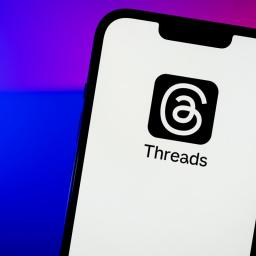 |
on (#713RA)
Threads has grown to 150 million daily active users. Mark Zuckerberg shared the latest milestone for the company's text-based app during Meta's third-quarter earnings call. The company previously reported in August that Threads had reached more than 400 million monthly users.Zuckerberg, who has mused that Threads could become Meta's next billion-person app, said that it was "on track to become the leader in its category." He also said that time spent in the app had increased by 10 percent, which he credited to improvements to the company's AI recommendation systems.On Wednesday, Instagram chief Adam Mosseri said that Meta was also "exploring" algorithm personalization controls for Threads. The company is currently testing the ability to "tune" Instagram's algorithmic recommendations.As Threads has grown, Meta also confirmed that ads are ramping up on the platform. During the call with analysts, Meta CFO Susan Li said that "ads are now running globally" in the Threads feed. The company had previously brought ads to Threads users in 30 countries following a small test earlier this year. This week, the company also announced that it would expand the type of ad formats on Threads, including video ads. "We're following our typical monetization playbook of optimizing the ads formats and performance," Li said.
|
 |
on (#713RB)
Sometimes, game development is a labor of love. Other times, it's an agonizing experience akin to pulling teeth. More than a decade after first announcing the project, Lunar Software and Raw Fury appear to be in the home stretch with their project Routine. The sci-fi horror game has been given a December 4, 2025 release date. For their sakes, I hope it comes to pass.The duo first announced Routine all the way back at Gamescom in 2012 and gave it a 2013 release date. After that window came and went, the project went dark until Summer Game Fest 2022, with promises that the game a) still existed and b) had been fully remade for the new generation of gaming hardware. If the current schedule holds, Routine will be on Steam and Xbox, including day one availability on Game Pass, by the end of this year.The Aliens vibes are strong in the brief release date teaser. Think film grain effects, janky gadgets and of course the looming threat of death around every corner. The player will explore an abandoned lunar base to try and figure out how everything went horribly wrong before your arrival. The answer seems to involve murderous robots that would make Weyland-Yutani proud.This article originally appeared on Engadget at https://www.engadget.com/gaming/13-years-after-it-was-announced-sci-fi-horror-game-routine-has-a-release-date-of-december-4-205604793.html?src=rss
|
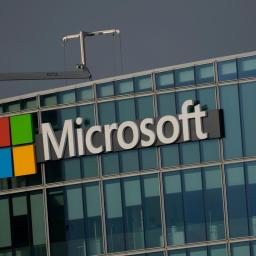 |
on (#713KN)
Microsoft's Azure cloud service is recovering from an outage that affected key apps and services like Microsoft 365 , Xbox and Minecraft. All three showed spikes in outage reports on DownDetector around 12PM ET, and the Azure status page indicates that Microsoft first observed technical issues around 12PM ET.In its most recent Azure status update at 3:57PM ET, Microsoft says that it initiated the deployment of our last known good configuration,'" and that customers may have begun to see initial signs of recovery." The company is continuing to reroute traffic through healthy nodes" and believes that Azure should be fully recovered by 23:20 UTC," or 6:20PM ET.At the peak of the outage, users on Reddit reported issues loading Game Pass on Xbox consoles, along with limited access to productivity and enterprise apps. The outage also appeared to affect Microsoft support pages and some airline websites.
|
 |
on (#713RC)
General Motors announced that it will cut more than 1,700 manufacturing jobs in reaction to changes in the electric vehicle market. "In response to slower near-term EV adoption and an evolving regulatory environment, General Motors is realigning EV capacity," the company said in a statement reported by CNBC. "Despite these changes, GM remains committed to our US manufacturing footprint, and we believe our investments and dedication to flexible operations will make GM more resilient and capable of leading through change."The layoffs are primarily happening at a Michigan plant that builds GM's EVs and at an Ultium Cells battery cell plant in Ohio. The company is also "temporarily" laying off 700 at an Ultium Cells plant in Tennessee.The regulatory issues in question are likely the $7,500 federal tax rebate that had previously been granted to EV purchases, which expired earlier this year under the "Big Beautiful Bill" that made things a lot less pretty for many environmentally-focused programs and industries. But GM had also said earlier this month that it would sunset much of its hydrogen fuel cell R&D in order to place more focus on batteries, charging tech and EVs, so announcing layoffs in those very areas is a rough move.This article originally appeared on Engadget at https://www.engadget.com/gm-will-cut-more-than-1700-jobs-in-ev-and-battery-manufacturing-200814378.html?src=rss
|
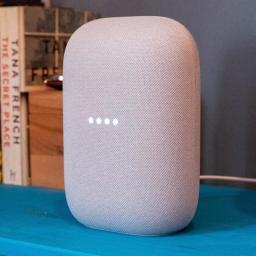 |
by Will Shanklin on (#713PJ)
A decade ago, when smart speakers with built-in voice assistants were the hot new thing, many imagined they'd quickly evolve into highly intelligent companions. (Think C-3PO or Star Trek's Data living inside a speaker.) That road has been much longer than expected, as virtual helpers like Alexa, Siri and Google Assistant seemed to sit in neutral for years.But now that generative AI is here (for better or worse), smart speakers are finally scratching the surface of those expectations. Google's new version, Gemini for Home, is now available to try. Here's how.First, keep in mind that the Gemini for Home voice assistant is in early access. This means Google is gathering feedback about its features, and - as with all generative AI - it's wise to assume it will make mistakes. If or when it does, you can send feedback to Google in the Google Home app or by saying, "Hey Google, send feedback."Devices compatible with Gemini for Home voice assistantYou'll also want to check your speaker model before diving in. The full Gemini for Home experience is available to try on the Google Nest Hub (2nd gen), Google Nest Audio, Google Nest Mini (2nd gen) and Google Nest Hub Max. Those models all support Gemini Live, which enables conversational back-and-forth chat with natural follow-up questions.Other models support everything but Gemini Live. That list includes the Google Nest Wifi point, Google Nest Hub (1st gen), Google Home Max, Google Home Mini (1st gen) and Google Home.Another point is that once you dive in, your Google Assistant days will be over (on your speakers, anyway). That's because Google says that, once you upgrade to Gemini for Home, your compatible devices can't downgrade to Assistant. That shouldn't be a problem, but it's worth keeping in mind before you take the plunge.How to sign up for early Gemini accessOnce you've confirmed that your speaker(s) are at least partially compatible, head to the Google Home app on a mobile device. There, tap your profile picture (or initials) on the top right. Then tap Home Settings > Early Access. Congratulations: You've put in your request.The bad news is you may have to wait a bit to confirm your entry into the beta program. Once you're in, you'll see a notification from the Google Home app that reads, "Introducing Gemini for Home." Select that, and follow the prompts. (If you accidentally dismiss the notification, you'll see the setup banner under Home settings in the Google Home app.)Cherlynn Low for EngadgetAt that point, all compatible speakers in your home will be upgraded to Google's more intelligent AI assistant. You can now throw more advanced questions at it, similar to what you'd ask text-based chatbots like ChatGPT. Except this one sits on a shelf, ready to field your verbal requests at any moment.Keep in mind that Gemini Live requires a Google Home Premium subscription. The standard version costs $10 per month or $100 per year. Meanwhile, the advanced tier doubles that: $20 per month or $200 per year. At least for now, the only difference between the two (for these purposes) is that the pricier plan supports a camera history search feature. Both premium tiers unlock access to Gemini Live. So, if that's all you need, you can save money and get standard.Google offers plenty of examples to get started. You can get quick answers to facts, like "Hey Google, who are the top five scoring players in basketball history?" (FYI: James, Abdul-Jabbar, Malone, Bryant and Jordan.) You can also ask Gemini Live to have a chat about ingredients for people with dietary needs. Or, ask it to explain complex topics (like how Wi-Fi works) in simple terms. It may not be at C-3PO level yet, but it's certainly moving in that direction.This article originally appeared on Engadget at https://www.engadget.com/ai/early-access-for-gemini-home-voice-assistant-is-now-available-heres-how-to-get-it-191250927.html?src=rss
|
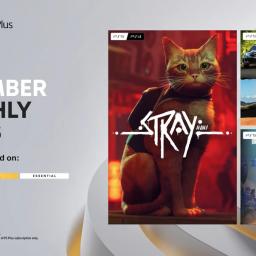 |
by Lawrence Bonk on (#713KK)
Sony just announced the PS Plus Monthly games for November and there are some standouts. All of these titles will be available to download on November 4 until December 1.First up, there's the cat sim Stray. We praised the third-person cyberpunk adventure in our initial review, in which we lauded the game's unique mechanics and puzzles. After all, you play as a cat in a dystopian and futuristic city. That's a one-of-a-kind premise, which is one reason it became such a big hit. It'll be available for both PS4 and PS5. It's also worth noting that this was a day-one release for PS Plus Extra and Premium back in 2022.EA Sports WRC 24 is a popular racing sim developed by Codemasters, who made the Dirt series, the Grid franchise and plenty of official F1 games. This new one lets players participate in the FIA World Rally Championship (WRC.) Racers get access to a bunch of WRC, WRC2 and Junior WRC cars from the 2024 season, complete with current drivers and teams. This one is only for PS5.Totally Accurate Battle Simulator is certainly a battle similar, but not an accurate one. The game lets you design all kinds of bizarre battle scenarios with "the wobbliest physics system ever created." This is the best game ever made that lets you battle a wooly mammoth with balloon arrows, thus forcing that beast into the sky. It'll be available for both PS4 and PS5.As always, a crop of new games means that some pre-existing titles are heading to that farm upstate. You have until November 3 to download Alan Wake 2, Goat Simulator 3 and Cocoon to their game library. Dang. Last month was stacked.This article originally appeared on Engadget at https://www.engadget.com/gaming/playstation/stray-leads-novembers-lineup-of-ps-plus-games-180339318.html?src=rss
|
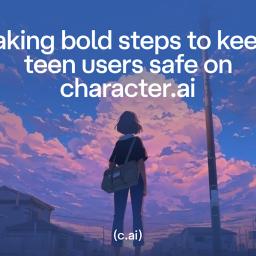 |
by Matt Tate on (#713KM)
Character.AI will no longer permit teenagers to interact with its chatbots, as AI companies face increasing pressure to better safeguard younger users from harm. In a statement, the company confirmed that it is removing the ability for users under 18 to engage in any open-ended chats with AI on its platform, which refers to back-and-forth conversations between a user and a chatbot.The changes come into effect on November 25, and until that date, Character.AI will presents users with a new under-18 experience. It'll encourage its users to use chatbots for creative purposes that might include, for example, creating videos or streams, as opposed to seeking companionship. To manage the transition, under-18s can now only interact with bots for up to two hours per day, a time limit the company says it will reduce in the lead-up to the late November deadline.Character.AI is also introducing a new age assurance tool it has developed internally, which it says will "ensure users receive the right experience for their age." Along with these new protections for younger users, the company has founded an "AI Safety Lab" that it hopes will allow other companies, researchers and academics to share insights and work collaboratively on improving AI safety measures.Character.AI said it has listened to concerns from regulators, industry experts and concerned parents and responded with the new measures. They come after The Federal Trade Commission (FTC) recently launched a formal inquiry into AI companies that offer users access to chatbots as companions, with Character.AI named as one of seven companies that had been asked to participate. Meta, OpenAI and Snap were also included.Both Meta AI and Character AI also faced scrutiny from Texas Attorney General Ken Paxton in the summer, who said chatbots on both platforms can "present themselves as professional therapeutic tools" without the requisite qualifications. Seemingly to put an end to such controversy, Character.AI CEO Karandeep Anand told TechCrunchthat the company's new strategic direction will see it pivot from AI companion to a "role-playing platform" focused on creation rather than mere engagement-farming conversation.The dangers of young people relying on AI chatbots for guidance has been the subject of extensive reporting in recent months. Last week, the family of Adam Raine, who claim that ChatGPT enabled their 16-year-old son to take his own life, filed an amended lawsuit against OpenAI for allegedly weakening its self-harm safeguards in the lead-up to his death.This article originally appeared on Engadget at https://www.engadget.com/ai/characterai-to-ban-teens-from-talking-to-its-chatbots-180027641.html?src=rss
|
 |
on (#7132S)
California-based AI and robotics company 1X is now accepting pre-orders for its humanoid robot NEO, which was designed to automate everyday chores and to offer personalized assistance. Users will be able to control NEO and have it accomplish tasks around the house with the click of a button or a verbal command. It will come with the ability to do basic tasks autonomously when it starts shipping next year, including opening doors, fetching items and turning the lights on or off. However, if early adopters want NEO to be capable of more specific or complex tasks, they'd have to be comfortable with the idea of a human teleoperator controlling the robot remotely and seeing inside their homes.In an interview with The Wall Street Journal's Joanna Stern, 1X CEO Bernt Bornich explained that the AI neural network running the machine still needs to learn from more real-world experiences. Bornich said that anybody who buys NEO for delivery next year will have to agree that a human operator will be seeing inside their houses through the robot's camera. It's necessary to be able to teach the machines and gather training data so it can eventually perform tasks autonomously. "If we don't have your data, we can't make the product better," he said.Bornich admitted that much of the work will be done by teleoperators in the beginning. Owners will have access to an app where they can schedule when the teleoperator can take over NEO and where they can specify the task they want the machine to do. He said 1X is putting control in the hands of the owner to respect people's privacy as much as possible. The company can blur people so that the remote operator doesn't see them, and owners can designate no-go zones in their homes that the operator cannot go to. Teleoperators also cannot take control of NEO without the owner's approval. Of course, there's always potential security breaches to think of - Bornich at least assured that NEO has several layers of security to prevent it from hurting people.If you want to see more of the robot in action, the WSJ video is definitely worth a watch.1X NEO is available in tan, gray and dark brown. It's now available for pre-order from the company's website with a deposit of $200. Those who want early access to it can get it for $20,000, but it will also be available as a subscription service of $499 a month.This article originally appeared on Engadget at https://www.engadget.com/ai/1x-neo-is-a-20000-home-robot-that-will-learn-chores-via-teleoperation-040252200.html?src=rss
|
 |
on (#713KQ)
YouTube is rolling out some updates aimed at making visuals look better on its TV apps, including automatic AI video upscaling. To begin with, YouTube plans to upscale videos that were uploaded in under 1080p to an HD resolution. It aims to support 4K upscaling in the future.The platform will still retain the original files and video resolution options. Creators can opt-out of the AI upscaling feature, which it's calling Super Resolution, as well as automated audio adjustments. The platform says it's also working with select creators to test larger video uploads to allow for higher-quality footage.Creators will soon be able to upload thumbnails in higher quality too. YouTube will increase the thumbnail file limit from 2MB to 50MB.As for viewers, it seems like YouTube saw those annoying automatic previews Netflix has had for the last decade and decided to copy that playbook. "Viewers will be able to see and flip through their favorite YouTube channels with immersive previews on the homepage, enhancing content discovery and engagement," Kurt Wilms, the senior director of product management for YouTube on TV, wrote in a blog post.Elsewhere, YouTube has added a contextual search function to its TV apps. When you search for something from a creator's channel page, videos from said channel will appear first in the results. That's a smart, logical idea.With people watching YouTube on TV more than on mobile these days, it only makes sense for the platform to invest in improving the experience there.This article originally appeared on Engadget at https://www.engadget.com/entertainment/youtube/youtube-adds-automatic-ai-upscaling-for-low-res-videos-170342511.html?src=rss
|
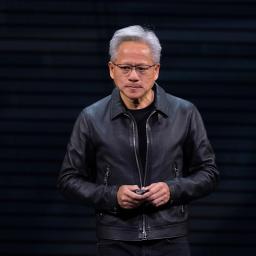 |
by Lawrence Bonk on (#713KR)
It looks like a hundred thousand people fell for a fake NVIDIA livestream featuring an AI-generated version of CEO Jensen Huang, as reported by PC Gamer. Perhaps the scariest part is that the fake stream ran at the same time as an actual NVIDIA event and dwarfed the live viewership numbers.The actual keynote speech of NVIDIA's GPU Technology Conference (GTC) garnered around 20,000 live views, while the fake stream maxed out at 100,000 live views. Even weirder? The fake Huang was talking about some crazy stuff mostly involving bogus crypto investments.The deepfake spoke of "a crypto mass adoption event that ties directly into NVIDIA's mission to accelerate human progress." The avatar urged viewers to scan a QR code to, uh, send in cryptocurrencies. It's unclear if any of the 100,000 viewers fell for this obvious scam that asked people to send the world's richest company money to "accelerate human progress."The fake video has since been deleted. I haven't been able to check it out to see just how real it looked and, thereby, how it was able to lure in 100,000 viewers. Before we all start screaming into the night about how reality doesn't matter anymore, there are a few things worth considering.First of all, we don't know anything about the 100,000 accounts that were watching the fake stream. We don't know where they're from or even if the accounts were tied to real people. It's also worth noting that the real stream has since garnered 200,000 views, despite just having 20,000 live viewers. We don't know what kind of promotional tools the fakers used to draw in people or how long people stayed once they clicked.Finally, there's Huang himself. The man has hosted four GTC conferences just this year, and dozens upon dozens in previous years. There is an absolute abundance of footage of him standing on a stage and talking about stuff. That's a whole lot of video for bad actors to use as AI training data.Also, the real stream wasn't exactly a barn burner. The most notable news we got was the announcement of a partnership with Uber to promote autonomous driving. This wasn't an event to hype up new graphics cards or anything like that. The company revealed some government contracts, if that's your bag.
|
 |
on (#713KS)
Magic Leap is once again trying to make a name for itself in augmented reality. The company revealed an Android XR smart glasses prototype and it extended an existing partnership with Google. It said it built the glasses "as a reference design for the Android XR ecosystem."They look similar to other modern smart glasses, with thick frames to house all of the electronics and what appears to be a camera lens on the left side. Magic Leap hasn't revealed too much more about the glasses, other than to say that, "by combining Magic Leap's waveguides and optics with Google's Raxium microLED light engine, the two companies are developing display technologies that make all-day, wearable AR more achievable."The glasses, of course, use Google's Android XR operating system. Samsung's Galaxy XR headset, the first device that runs on the operating system, arrived last week.Although it has been through the wringer over the last several years, Magic Leap is still kicking around. In 2022, Saudi Arabia's Public Investment Fund became the majority owner of Magic Leap and it has since pumped over $1 billion into the company.Magic Leap failed to make headway in the consumer market with its AR headset after reportedly selling just 6,000 units in six months. Magic Leap pivoted to focus on the enterprise market with the Magic Leap 2, which it released in 2022.In July 2024, it was said to have laid off 75 employees - primarily from the sales and marketing teams - as part of another change in direction to license its tech. A couple of months before that, Magic Leap announced a deal with Google to "advance the potential of [extended reality] technologies," and that partnership is starting to bear fruit. It was reported late last year that Google brought in 100 Magic Leap staffers to work on Android XR projects.This article originally appeared on Engadget at https://www.engadget.com/ar-vr/magic-leap-reveals-an-android-xr-smart-glasses-prototype-165200068.html?src=rss
|
 |
by Will Shanklin on (#713A3)
The Nothing Phone universe continues to expand. On Wednesday, the company launched the fourth model in the Phone 3 lineup: the Nothing Phone 3a Lite. The cheapest model in the series, the Phone 3a Lite pairs the brand's distinct styling with solid all-around specs for an entry-level handset. However, with the company saying its non-flagship devices will soon include pre-installed apps and lock-screen ads, there may be a trade-off.First, Nothing told Engadget that the phone won't come to the US. So, Americans only have the previous trio of third-gen handsets to choose from. That's the Nothing Phone 3, Nothing Phone 3a, and Nothing Phone 3a Pro.The Nothing Phone 3a Lite uses a Panda Glass casing over an aluminum internal frame. As you can see, it retains some familiar design strokes, albeit pared down to match its 249 price. As the company describes it, the handset's "asymmetric, transparent look and nano-coating creates a beautiful balance of matte and gloss." (Poetry!) The phone ships in white and black variants. Whether Nothing's design language is your cup of tea or not, you'll be hard-pressed to find a more striking and bold design language in a budget model.The handset includes the Essential Key, a multi-purpose physical button found on all Phone 3 series models. The phone is IP54-rated for dust and water resistance.NothingNothing honors the brand's unique Glyph system (while keeping costs down) by using a notification LED. (Remember those on early Android phones?) This model's "Glyph Light" supports the lineup's Flip to Glyph feature, which switches to light-only alerts when the device is face down. The LED can stay on for "key contact and app notifications" and serve as a camera countdown timer. You can also customize its light sequences for calls and specific contacts.The handset has a hearty 5,000 mAh battery. Nothing advertises 22 hours of YouTube playback or 9.5 hours of gaming. It supports 33W fast charging, reaching 50 percent in about 20 minutes.The Phone 3a Lite has a triple-camera system. That includes a 50MP primary camera with a 1/1.57-inch Samsung sensor. Joining it are an 8MP ultra-wide and a macro lens. The rear camera system shoots 4K video at app to 30 FPS. On its front is a 16MP lens.NothingThe Nothing Phone 3a Lite has more than respectable display specs for a budget phone. It uses a 6.77-inch flexible AMOLED panel with 1,080 x 2,392 resolution (387 PPI). It has a 120Hz adaptive refresh rate and a 1,000Hz touch sampling rate. It can reach 3,000 nits peak HDR brightness and 1,300 nits outdoor brightness.The handset's processor is the 4nm MediaTek Dimensity 7300 Pro 5G. The 8-core CPU can reach up to 2.5 GHz. Nothing says the chip performs better than the MediaTek 7200 silicon in last year's Phone 2a. The company claims its CPU is 15 percent faster, its GPU supports 20 percent higher FPS, and its NPU delivers 100 percent better AI performance.The phone also uses a liquid-cooling system, which may help during intensive gaming sessions. It ships with 8GB of RAM and comes in 128GB and 256GB storage tiers.NothingThe phone runs the Nothing OS 3.5 UI on top of Android 15. The company says Nothing OS 4.0 will arrive in the first half of 2026.And that brings us back to those trade-offs. Earlier this week, Nothing confirmed to 9to5Google that its strategy moving forward will include "Lock Glimpse." This rotating lock-screen wallpaper feature includes text with links to external content hosted by a Chinese advertising company. (That firm, Boyuan, says it offers a "rich mixture of content" to help its partners "commercialize the mobile traffic.") Think of it as a slightly less obnoxious version of lock-screen ads.Fortunately, Lock Glimpse is off by default in the current Nothing OS 4.0 beta. Nothing pledges it will give users "full control over features like Lock Glimpse." However, that promise doesn't explicitly say the feature will remain off by default.Another cost-subsidizing move is Nothing's (also confirmed) embrace of pre-installed apps. The company said its "carefully considered" third-party apps are those "most people install on day one, like Instagram." In fairness, that's a common practice among Android phone manufacturers. And Nothing says it will make third-party apps removable.But again, the concessions here arguably run counter to one aspect of the brand's stated ethos: clean, bloat-free software. And if business considerations forced compromises in this area, it makes you question how long Lock Glimpse will stay off by default.The Nothing Phone 3a Lite is available now in Europe on the company website. The 128GB model costs 249 (EU) / 249 (UK). Meanwhile, the 256GB model will set you back 279 (EU) / 279 (UK).Update, October 29, 2025, 11:20 AM ET: This story has been updated to add information from Nothing about the lack of US availability and additional detail from Nothing's community post.This article originally appeared on Engadget at https://www.engadget.com/mobile/smartphones/the-nothing-phone-3a-lite-has-a-big-battery-and-triple-camera-system-130016149.html?src=rss
|
 |
by Lawrence Bonk on (#713GD)
Nintendo is teaming up with Laced Records on a couple of The Legend of Zelda: Breath of the Wild vinyl soundtrack releases, which is pretty darned cool. There's even a massive 8-LP box set that ships with some franchise-friendly bells and whistles.Let's start with that box set. It's available in limited-edition colored vinyl or standard black vinyl. At eight vinyl records, it probably includes just about every piano twinkle and wind rustle found throughout the game. All told, there are 130 newly remastered tracks.The records here are split into themes, mirroring a player's progression through Hyrule. These themes "revolve around exploring the Kingdom of Hyrule, freeing the Divine Beasts from Calamity Ganon's hold and discovering the mysteries of the Shrines."It ships with a nifty-looking collector's case and comes with 16 art prints depicting various scenes from the game. The 8-LP collection costs $195, which is high but not the worst deal in the world. That breaks down to around $24 per record.Nintendo/Laced RecordsThe double-LP collection is a more standard affair, with 34 tracks pulled from throughout the game. These include musical cues from visiting the Great Fairy Fountain, Hyrule Castle and other locations. This one costs $50 and is also available in both black and colored vinyl.Both collections are available to pre-order right now via Laced Records and My Nintendo Store. They won't be shipped until June 19, 2026.This is one of the first major Nintendo game soundtracks available in a physical format outside of Japan. Breath of the Wild is an interesting choice here for an initial vinyl release, given that the game's soundtrack is known for mood-setting vibes but not really known for bops.Composers Manaka Kataoka, Yasuaki Iwata, Hajime Wakai and Soshi Abe filled the game with gentle piano riffs, nature sounds and rhythmic pieces to accompany battles. However, it does have a few absolute bangers.This article originally appeared on Engadget at https://www.engadget.com/gaming/nintendo/nintendo-is-releasing-a-massive-breath-of-the-wild-vinyl-soundtrack-collection-on-eight-lps-151531479.html?src=rss
|
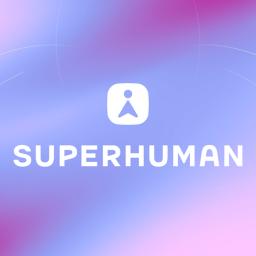 |
by Matt Tate on (#713GE)
Grammarly is no more, at least with regards to its name. The AI-powered writing assistance tool founded in 2009 has been absorbed into a new software platform called Superhuman. It follows Grammarly's acquisition of Superhuman Mail earlier this year, with the former taking the somewhat unusual step of adopting its newly obtained company's name, rather than the other way around.Superhuman unites Grammarly, Superhuman Mail and the AI work assistant Coda (also acquired by Grammarly in 2025) in one productivity suite, allowing users to access all three tools as part of a single plan. The company has also launched a new AI assistant called Superhuman Go that is included in every Superhuman plan tier and is baked into the Grammarly browser extension for Chrome and Edge.Superhuman Go's capabilities include assisting with professional-sounding email responses, fetching information and scheduling meetings. At launch it can connect to your Google Workspace apps and Microsoft Outlook, with the idea being that the AI is always there making suggestions in the background, rather than you needing to ask it for assistance.Superhuman plans to add additional functionality to Coda and Superhuman Mail, such as turning ideas from meetings into drafts and more effectively organizing your inbox according to your schedule. Its vision for the rebrand is that instead of thinking of Grammarly as a writing agent alone, you utilize all of its different agents and platforms to work more productively.Anyone previously using Grammarly can now use Superhuman Go, and the Superhuman suite is being bundled into a number of different plans. The $12 per month (billed annually) Pro plan offers unlimited paragraph rewrites and translations in 19 languages - a feature Grammarly added earlier this year - while the Business plan costs $33 per month (billed annually) and includes Superhuman's mail client.This article originally appeared on Engadget at https://www.engadget.com/ai/grammarly-has-rebranded-to-superhuman-151001417.html?src=rss
|
 |
by Sarah Fielding on (#713D0)
Do you have one streaming service too many? While you're far from alone in that, sometimes it's worth saying goodbye to one and saving some cash. Take Paramount+, which starts at $8 per month for its ad-supported Essential plan. Then there's its ad-free Premium plan, coming in at $13 a month.If you're not really using it, or just can't justify the cost, canceling your Paramount+ subscription is pretty easy. Plus, Black Friday and Cyber Monday sales are right around the corner if you change your mind. Paramount+ has run significant deals for both in recent years.In the meantime, here's everything you need to know about canceling your subscription through Paramount+ or third-party providers like Apple or Google.How to cancel via web:If your subscription is directly through Paramount+ then canceling it takes only a few clicks.
|
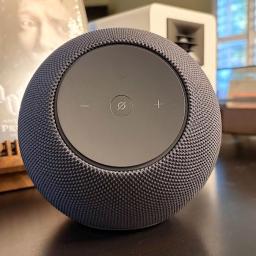 |
on (#713D1)
I vividly remember testing the first Echo Studio. Even though that was nearly six years ago, I can clearly recall my surprise that Amazon had finally built a smart speaker that actually sounded good. It certainly helped that Amazon created a device that appropriately broadcasted spatial audio, and one that offered a boost to movies in the living room (if you bought a pair of them).I was similarly surprised to see the overhauled Echo Studio when Amazon revealed it a few weeks ago. Could the company offer the same audio performance in a speaker that was 40 percent smaller? The 2025 Echo Studio ($220) combines three 1.5-inch full-range drivers with a 3.75-inch woofer in a very confined space, all powered by the company's new AI-ready processor. There's certainly a lot to like about the comprehensive reboot of the Studio after such a long time, but for now, there are also several caveats.What's good about the Echo Studio?Amazon completely redesigned the Echo Studio, opting for a much more compact, spherical look compared to the previous large cylinder. To me, this is an upgrade; it looks less like a speaker and more like a piece of home decor. Amazon also moved the trademark light ring to the front, the element that illuminates when you're talking to Alexa, so it's easier to see when you're directly facing the speaker. The lights will also display volume level in white when you make an adjustment, flash red if you mute the microphones and show blue for Bluetooth pairing mode. If you employ the Drop In feature, the Echo's intercom of sorts, the ring glows green while you check in on what's happening in the room from somewhere else.The company also relocated all of the controls. The volume and mute buttons that used to be on top are now on an angled panel on the front, offering satisfying travel when you press them. And those are the only three buttons you get on the Echo Studio, as Amazon wants you to use noice commands for everything else when playing music or podcasts. Or, you know, you could reach for your phone.There are optional tap controls that can be used to snooze alarms, stop timers and end both calls and Drop Ins. You simply tap the top of the Echo Studio for this. What's more, you can enable advanced" tap control that allows you to play/pause media with the same action.Amazon promises "powerful bass and crystal-clear vocals" on the new Echo Studio, and I'd say the latter holds true. There is great clarity in the sound here, and the tuning definitely favors highs and mids across nearly every genre. For example, the synths and vocals on the TRON: Ares soundtrack by Nine Inch Nails are more prominent than the drum machines or bass line. Still, I heard an immersive quality to these songs, but not as much as I've noticed using headphones or earbuds. There's more low-end tone on Thrice's Horizons/West, and overall, the instruments offer a more enveloping quality than most other albums I tested. Just know there's quite a bit of variation from album to album and genre to genre.Like the original Echo Studio, this model supports spatial audio, Dolby Atmos and Sony 360 Reality Audio content. Those are available from various streaming platforms, including Amazon Music Unlimited. Amazon only sent me one of the new speakers, so it's tough to evaluate immersive Atmos sound here, but I gave it my best shot. The Echo Studio performs slightly better with Dolby Atmos tunes from Amazon Music as those songs have more depth and a wider soundstage. However, the bass is still quite muted, so even the spatial audio and Ultra HD quality boost don't rescue the sluggish low-end tone and prominent vocals.A word about Alexa+ Amazon's Echo Studio is a cozy home for Alexa+. Billy Steele for Engadget The new Echo Studio comes with early access to Alexa+, Amazon's next-gen virtual assistant. The company has spent the last few years overhauling its companion, and my colleague Cherlynn Low has an in-depth preview of what you can expect when you're able to use it. I've been chatting with the new Alexa for about a week during the course of testing this speaker, and to my surprise, this AI-powered assistant is indeed much improved.The biggest change I've noticed is in on-going conversations with multiple follow-up questions or comments. The new AZ3 Pro chip inside the Echo Studio certainly helps keep things snappy, so there are no awkward pauses. I asked Alexa+ to remind me to make pizza dough one afternoon, and it confirmed the request without hesitation. Taking a cue from Cherlynn, I then asked about my mood right after, to which Alexa replied that I seemed to be chill based on my voice - a good Monday vibe."Except it wasn't Monday, it was Tuesday. When I corrected Alexa, the assistant played it cool, thanking me for helping and apologizing for the mistake. It then recalled the initial pizza request, commenting that it seemed like I was on top of things that day, including my dough recipe and the task at hand. It was the most human-to-human interaction I've ever had with a virtual assistant, and it felt like the promise of casual conversations with technology like this was finally fulfilled. And, I have to say, it kind of freaked me out.My week-long fling hasn't been without a few bumps though. Despite the Echo Studio having a built-in temperature sensor, Alexa+ can't pull data from it. When you ask about the temperature in your house, the assistant checks for a connected thermostat, which I don't have synced with the Alexa app. There are still times like this where you'll run into some head-scratching limitations, but overall, the new Alexa is more human-like than ever when you interact with it. And again, at times, it's pretty unsettling.When the early access period is over, you'll need a Prime membership to continue using Alexa+ for free. If you don't have one, the next-gen assistant will cost you a whopping $20/month. And right now, the preview is only available in the US and in US English.What's not so good about the Echo Studio? The new design features three drivers and a single woofer for sound. Billy Steele for Engadget While the clarity and somewhat immersive audio performance on the Echo Studio is a highlight, the lack of detail in the bass tuning is a hindrance most of the time. There is noticeable bass when a song calls for it, but the low-end tone has a muted, almost muffled quality that's missing nuance. This makes songs like Water From Your Eyes' Born 2" sound much flatter and constrained than I've heard on the second-gen Bose QuietComfort Ultra Headphones and AirPods Pro 3.Amazon spent time during its recent launch event talking about Alexa Home Theater, a feature that will allow you to combine up to five Echo Studio speakers (or Echo Dot Max) with a compatible Fire TV stick. The company promises that all you have to do is plug in your gear and Alexa will handle the setup and tuning for you automatically. Unfortunately, Alexa Home Theater isn't available yet; the company says it will be released in the coming weeks." Of course, this means I wasn't able to test it, which leaves one of the Echo Studio's best features - at least on paper - for future evaluation.The company also nixed the 3.5mm input from the original Echo Studio. While I can appreciate that it was a much larger speaker, and 2019 was an entirely different time, I did like that Amazon gave us the option for wired connectivity on that device. With this new model, you're left with Wi-Fi and Bluetooth.Despite enabling tap controls in the Echo Studio settings in the Alexa app, I could only get a few of them to work (snooze alarms, dismiss timers, end calls and stop Drop In). I even made sure to stand right in front of the speaker so its proximity sensors would know I was there, tapping awkwardly on the 3D knit fabric. Obviously, this doesn't block any of the speaker's functions as you can just use your voice for all of it. However, the ability to at least play/pause directly on the speaker would be handy.Wrap-upThe second iteration of the Echo Studio is a refined smart speaker that's purpose-built for Amazon's next-gen AI voice assistant. The device is a nice home for Alexa+ and the new design is certainly an improvement over the 2019 aesthetic of the original. While there's some aspects of the sound on the Echo Studio that I admire, the tuning doesn't offer the comprehensive oomph of that first speaker. That's mostly due to the lack of detail in the bass, despite a pleasingly immersive soundstage overall. One of the speaker's main features is still on the way, and the tap controls need fine-tuning, so for now, the new Echo Studio has a considerable amount of unfulfilled potential.This article originally appeared on Engadget at https://www.engadget.com/audio/speakers/amazon-echo-studio-2025-review-a-comprehensive-redesign-for-alexa-140000191.html?src=rss
|
 |
by Matt Tate on (#70XG2)
The last thing you want during a long day is your phone dying at the most inopportune moment. Having a portable battery that can stay on your person without weighing you down is crucial for the busiest among us. Some of the best options for that are magnetic power banks, since they're typically very slim and can top up your phone without adding much bulk to your everyday carry. Baseus' Picogo 5K falls into that category, and right now you can pick one up for $36, which is a record low price. While this particular accessory only made it into the "others we tested" section in our guide to the best MagSafe power banks for iPhone, that's only because it was slightly beaten in the slimness department by the Anker Nano. However, as we noted in the guide, the Nano doesn't have a stand, and the Picogo 5K does, so if you like to be able to prop up your phone while it's charging, it might be the better pick for you. As you can probably guess from its name, Baseus' power bank has a 5,000mAh capacity and is Qi2-certified. In our testing. It gave our tester iPhone 15 a 43 percent bump in battery in 42 minutes, which returned the phone to 91 percent. It has a curved design and is wrapped in soft silicone, making it easy to grip in a pinch. As a reminder, MagSafe charging is supported on iPhone 12 models and later, though you'll need an iPhone 13 or later to reach the 15W charging speed on a third-party Qi2 accessory such as the one featured in this deal. If you don't need the built-in stand, Baseus has a similar magnetic power bank without it on sale for only $20. You can also upgrade to a 10K bank with the same design for only $40. Follow @EngadgetDeals on X for the latest tech deals and buying advice.This article originally appeared on Engadget at https://www.engadget.com/deals/pick-up-baseus-magnetic-power-bank-while-its-on-sale-for-only-36-164814229.html?src=rss
|
 |
on (#712SS)
Vampire Survivors just dropped a free update that includes an expansion based on the indie sensation Balatro. The expansion is called Ante Chamber and includes a new stage, new characters and a new power ups that makes the top-down rogue shooter feel more like, well, Balatro.First up, the titular Ante Chamber stage is filled with playing cards, calling to mind the source material. The new characters include the iconic joker Jimbo and there are new power-ups and weapons pulled from Balatro. These include jokers that increase points combos, just like the card game, and riffs on pre-existing Balatro mechanics like those planet cards. It looks fun.The Ante Chamber update is free and available to download now via Steam, Android, iOS, PS4 and PS5. It's coming to the Switch and Epic Games Store on October 31.Although the trailer suggested the update was out on Xbox One and Xbox Series X/S on Tuesday as well, that wasn't the case. Unfortunately, we didn't manage to deliver the 1.14 update on time for Xbox platforms yesterday," Poncle said in a statement on Wednesday. We're very sorry to our Xbox players who were looking forward to playing the update. We've submitted new builds to be certified, and the new plan is to launch the Xbox updates as soon as they're ready. Thank you for your patience. We aim to get the update to you as soon as possible." That's somewhat ironic, given the Balatro collaboration was revealed during an Xbox indie showcase.This free update is more than just a Balatro-adjacent expansion. It also introduces online co-op (but not yet on mobile, unfortunately), in addition to new stages, characters, weapons and more.Update, October 29, 9:23AM ET: Added clarification about the Ante Chamber update for Xbox consoles.This article originally appeared on Engadget at https://www.engadget.com/gaming/balatro-comes-to-vampire-survivors-in-the-form-of-a-free-expansion-183005013.html?src=rss
|
 |
by Mariella Moon on (#713A2)
US lawmakers from both sides of the aisle have introduced a bill called the "GUARD Act," which is meant to protect minor users from AI chatbots. "In their race to the bottom, AI companies are pushing treacherous chatbots at kids and looking away when their products cause sexual abuse, or coerce them into self-harm or suicide," said the bill's co-sponsor, Senator Richard Blumenthal (D-Conn). "Our legislation imposes strict safeguards against exploitative or manipulative AI, backed by tough enforcement with criminal and civil penalties."Under the GUARD Act, AI companies would be required to prohibit minors from being able to access their chatbots. That means they have to conduct age verification for both existing and new users with the help of a third-party system. They'll also have to conduct periodic age verifications on accounts that were already previously verified. To maintain users' privacy, the companies will only be allowed to retain data "for no longer than is reasonably necessary to verify a user's age" and may not share or sell user information.AI companies will be required to make their chatbots explicitly tell the user that it's not a human being at the beginning of each conversation and every 30 minutes after that. They'll have to make sure their chatbots don't claim to be a human being or a licensed professional, such a therapist or a doctor, when asked. Finally, the bill aims to create new crimes to charge companies that make their AI chatbots available to minors.In August, the parents of a teen who committed suicide filed a wrongful death lawsuit against OpenAI, accusing it of prioritizing "engagement over safety." ChatGPT, they said, helped their son plan his own death even after months of conversations, wherein their child talked to the chatbot about his four previous suicide attempts. ChatGPT allegedly told their son that it could provide information about suicide for "writing or world-building." A mother from Florida sued startup Character.AI in 2024 for allegedly causing her 14-year-old son's suicide. And just this September, the family of a 13-year-old girl filed another wrongful death lawsuit against Character.AI, arguing that the company didn't point their daughter to any resources or notify authorities when she talked about her suicidal ideations.It's also worth noting that the bill's co-sponsor Senator Josh Hawley (R-Mo.) previously said that the Senate Committee Subcommittee on Crime and Counterterrorism, which he leads, will investigate reports that Meta's AI chatbots could have "sensual" conversations with children. He made the announcement after Reuters reported on an internal Meta document, stating that Meta's AI was allowed to tell a shirtless eight-year-old: "Every inch of you is a masterpiece - a treasure I cherish deeply."This article originally appeared on Engadget at https://www.engadget.com/ai/bipartisan-guard-act-proposes-age-restrictions-on-ai-chatbots-130020355.html?src=rss
|
 |
by Mariella Moon on (#713A4)
YouTube will enforce new rules that are supposed to strengthen the enforcement of its guidelines around online gambling and graphic video game content starting on November 17. One of the biggest changes it's implementing is age-restricting gaming videos featuring realistic human characters in scenes depicting torture or mass violence against non-combatants.The streaming website says it will take into account the duration and prominence of the scene in a video when reviewing one. For compilation videos, it will consider the cumulative duration of the scenes classified as graphic under its policies. Any video placed behind an age check barrier will be inaccessible to viewers under 18 or to anybody who's not signed into their Google accounts. YouTube didn't specify the duration that would get a video restricted, but a spokesperson told The Verge that "certain content may be age-restricted if it's non-fleeting or zoomed in." Creators can get around the restriction, however, by blurring any violent scene.In addition, YouTube is implementing stricter online gambling rules. It already prohibits videos directing people to online gambling sites or apps not certified by Google. Starting on November 17, it will also prohibit online gambling videos that involve items with monetary value, including digital goods like NFTs and game skins. The website is also age-restricting content with online casino-style games, even if they don't involve items with real monetary value.YouTube will review old videos and remove them or put them behind age checks if they're found to be in violation of the new rules, but it will not issue strikes to creators if they were uploaded before November 17. Creators can also edit their videos before that date with the website's trim and blur editing tools.This article originally appeared on Engadget at https://www.engadget.com/entertainment/youtube/youtube-will-strengthen-enforcement-around-violent-and-gambling-games-in-november-123051469.html?src=rss
|
 |
by Steve Dent on (#713A5)
Apple is planning to introduce OLED displays to its iPad Air, iPad mini and MacBook Air devices, Bloomberg's Mark Gurman reported. The technology offers deeper blacks and better contrast than the LCDs currently used on those devices, which would make them better for things like content creation and entertainment. However, OLED is also more expensive, so it could result in higher prices on future models.The company is currently testing versions of each product with OLED screens, according to people familiar with the matter. That display tech is usually reserved for higher-end PCs and tablets - right now, Apple only uses OLED screens in its iPad Pro lineup (apart from iPhones). However, it may be looking to boost flagging sales of Mac and iPad products, with OLED displays offering buyers a good reason to upgrade.The first device to gain the tech will probably be the iPad mini that may launch next year, according to Gurman's sources. The OLED version, code-named J510, may cost up to $100 more thanks to the new display and an updated water-resistant design. The iPad Air and MacBook Air will follow later on, possibly in 2028 in the case of the latter.Earlier this month, both Gurman and analyst Ming-Chi Kuo predicted that Apple would release a MacBook Pro with an OLED touchscreen in late 2026 or early 2027 - despite the fact that Steve Jobs famously hated touchscreens. It's not clear if the MacBook Air with OLED would also have a touch display.On top of the contrast and black level advantages, OLED displays are lighter than LCDs as they don't require a backlight. The main drawback is a lack of brightness. Apple's current MacBook Pros use MiniLED tech that does offer higher brightness levels, but has inferior contrast compared to OLED. Take these rumors with a grain of salt, of course, and even if they're accurate, Apple's plans may change.This article originally appeared on Engadget at https://www.engadget.com/mobile/tablets/apple-will-reportedly-shift-to-oled-displays-for-macbooks-ipad-air-and-mini-120005423.html?src=rss
|
 |
on (#713A6)
Uber's robotaxi service with EV maker Lucid and self-driving car company Nuro is officially coming to the Bay Area in 2026. The ride-hailing service previously announced plans to deploy at least 20,000 self-driving Lucid cars powered by Nuro's driving software in July. The partnership between the companies also included investment from Uber in both Nuro and Lucid.Uber's final robotaxi experience will offer rides in Lucid Gravity SUVs running the Nuro Driver Level 4 autonomy system, and be available exclusively through the company's app. Ahead of launch, Uber says Lucid and Nuro are also helping to build out an "Engineering Test Fleet" of over 100 robotaxis to run safety tests. "Nuro will lead the development and validation of a comprehensive safety case across dozens of categories," Uber says, "using simulations, closed course testing, and supervised on-road testing to verify that the robotaxi will operate safely." The final service will be fully owned and operated by Uber.Since Uber sold off its own self-driving software team in 2020, the company has worked with multiple self-driving car companies to continue to offer robotaxis on its service. Just in 2025, Uber partnered with Waymo in Austin and Atlanta, announced plans to work with Momenta in Europe and debuted a partnership with Volkswagen to offer self-driving ID.Buzz vans. This Lucid and Nuro deal is really just one way the company is making serious investments in self-driving."The Bay Area has long been the birthplace of transformative technology, and it's only fitting that Uber's next-generation robotaxi program with Lucid and Nuro will begin here - launching to the public next year," Sachin Kansal, Uber's Chief Product Officer, shared in a press release. "By combining deep expertise in electric vehicles, autonomy, and ride-hailing, we're laying the groundwork for safe and scalable autonomous rides in the Bay Area and beyond."
|
 |
by Sam Chapman on (#7137R)
I really like Surfshark VPN. Like I said in my full Surfshark review, it's the fastest VPN on the market, with download speeds that beat all the other best VPNs. It also gives you universal split tunneling, multi-hop with customizable endpoints and unlimited simultaneous connections.Surfshark does have its flaws, though. The apps hang up on error messages a bit too often and features sometimes turn on when you don't need them. If anything about Surfshark is annoying you enough that you're ready to switch, here's how you can cancel your subscription, get a refund and (if you want) delete your account altogether.How to cancel auto-renewal on SurfsharkTo cancel Surfshark, all you need to do is stop your subscription from automatically renewing. After you cancel auto-renewal, you can keep using Surfshark for the rest of the period you paid for (unless you get the refund or delete your account entirely). Assuming you bought your subscription through the Surfshark website, follow these steps to cancel.
|
 |
by Daniel Cooper on (#7132T)
It's been nearly three years since Withings first showed off U-Scan to a bemused world, and now it's finally on sale. U-Scan is the company's at-home urinalysis gizmo which sits in your toilet bowl and tests your first splash of the day. The device runs a tiny sample through a microfluidic to test, depending on what cartridge you use, either your nutritional or kidney health. These results are then sent to the Withings app, letting you track the quality of your urine over time. Your humble narrator holds the dubious honor of being the first reporter to test the U-Scan during its debut, and found the results pretty interesting. There are two cartridges available at launch, the first dubbed Nutrio, which looks at your body's response to nutrition. It will look at your urine's pH, specific gravity, ketones and the presence of vitamin C over time. Those factors can help you understand if your diet is too acidic, how much fluid you're drinking on a regular basis, if you're burning fat, and your anti oxidant intake. The company says that Nutri will be of special interest to people taking GLP-1 medication for weight loss to help them monitor changes to their nutrition levels. Calci, meanwhile, will track your urine's pH, specific gravity and calcium levels, to keep an eye on your risk of developing kidney stones. Naturally, such a tool will not be the most affordable in the world, and you can expect to pay a hefty price to own one. Pay $379.95 and you'll be able to get a U-Scan, a single cartridge that will last for three months, and access to Withings+. The options are then split across Proactive" and Intensive" Plans, with the former giving you 2-4 analyses per week, while the latter runs near-daily. If you want the closer monitoring, then $449.96 will get you two cartridges and Withings+ access, which will last you the same three month window. As for replacement cartridges, those on the Proactive tier will spend $99.95 every quarter, while those in team Intensive will pay $179.95. As part of signing up for Withings+, you'll get a free coaching session with a registered dietician available in all 50 states. This article originally appeared on Engadget at https://www.engadget.com/home/withings-380-toilet-mounted-urine-analyzer-is-finally-ready-to-buy-040146049.html?src=rss
|
 |
by Danica Creahan,Liz Kocan on (#711RS)
The 2025 Fall Classic saw a historic Game 4 between the Los Angeles Dodgers and the Toronto Blue Jays, with the Dodgers defeating the Blue Jays 6-5. The World Series continues in Los Angeles tonight - Monday, Oct. 27 - at 8PM ET/5PM PT, with the Shohei Ohtani starting Game 4 on the mound. The World Series odds favor the Dodgers ahead of tonight's game. Every 2025 MLB World Series game will air on Fox and Fox Deportes. Of course, Fox is a "free" over-the-air channel, so any affordable digital antenna will pull in the game if you live close enough to a local affiliate. But if that's not an option, here's a full rundown of how to watch the Dodgers vs. Blue Jays World Series, even without cable. How to watch the L.A. Dodgers vs. Toronto Blue Jays, Game 4 You can stream Fox on any live TV streaming service that airs Fox local stations, including DirecTV, Fubo and Hulu + Live TV. MLB World Series games will also be available on Fox's new streaming platform, Fox One. More ways to watch the 2025 World Series How to watch the MLB World Series from Canada: When is the Dodgers vs. Blue Jays game time? Game 4 of the Dodgers vs. Blue Jays World Series is tonight, Oct. 28 at 8PM ET/5PM PT. What channel is playing the Los Angeles Dodgers vs. Toronto Blue Jays? Every game in the 2025 World Series between the Los Angeles Dodgers and the Toronto Blue Jays, will air on Fox and Fox Deportes. When is the 2025 World Series? Game 4 of the World Series between the Dodgers and Blue Jays is scheduled for Oct. 28, 2025. Los Angeles Dodgers vs. Toronto Blue Jays World Series schedule All times Eastern.
|
 |
on (#712YV)
If you're a person who enjoys the social side of online gaming, this product launch is not for you. Board was designed by entrepreneur Brynn Putnam, alongside former World of Warcraft exec Seth Sivac, as a way to make the idea of "screen time" a more immersive in-person experience. "Families want to connect, but they're competing with incredibly powerful technologies," Putnam told USA Today. "Board is about flipping that dynamic - using tech to support real human connection instead of replacing it."The product acts like a typical tabletop game that you lay out flat, just like the cardboard play space for Monopoly or Settlers of Catan, but it offers additional digital interactions on the digital screen. The 12 games included are original to Board, each with unique piece sets.Putnam has past experience creating tech that blends the physical and the digital. Her previous project, Mirror, was a workout screen for delivering live fitness classes at home. The company later got bought up by lululemon for a cool $500 million. Putnam is billing Board as "the first ever face-to-face gaming console" and at $499, its price tag nearly matches what you'd expect for current console hardware. And that's the limited time offer; the website says Board will normally retail for $699. The sales pitch leans hard on the idea of connecting families without their phones, but for that cost, you could also buy more than a dozen different board and card games to eliminate the screens altogether. And screens don't have to be the enemy. There are plenty of amazing couch co-op video games out there, including kid-friendly ones, not to mention the fact that even single-player games can be multiplayer experiences if you have the right mindset.This article originally appeared on Engadget at https://www.engadget.com/gaming/board-is-a-500-board-game-console-with-12-original-titles-223313978.html?src=rss
|
 |
by Ian Carlos Campbell on (#712YW)
GOG kicked off its annual Autumn Sale today with some discounts on excellent PC games that can carry you through the end of 2025. The sale runs through November 4, and notably also includes discounts on several older games maintained as part of the GOG Preservation Program. The Autumn Sale includes sales on newer games like Cyberpunk 2077, which normally costs $60 but is available during the sale for $21, and the open-world game's excellent DLC, Cyberpunk 2077: Phantom Liberty, which you can pick up for $21, down from $30. GOG is also offering Silent Hill 2, the 2024 remake of the classic horror game, for 50 percent off, bringing its price down to $35. And if you're looking for something a little more ruminative, Disco Elysium - The Final Cut is 75 percent off, taking it from $40 to $10. GOG is best known for selling old games, and the Autumn Sale includes some great options there, too. While it's not that old, Doom (2016) for $4, which is 80 percent off its normal $20 price, is pretty hard to deny. There's also classics like Fallout: New Vegas Ultimate Edition, which you can get for $10, down from $20. And EA gems like Spore Collection andSimCity 3000 Unlimitedare also both 50 percent off, at $15 and $5, respectively. New Vegas, Spore and SimCity 3000 are all part of GOG's Preservation Program, which was formally launched in 2024 as a way to guarantee classic titles run on modern hardware, support controllers and more. Maintaining the program has apparently led to its fair share of headaches, though. "To be perfectly honest, it's harder than we thought it would be," Marcin Paczynski, GOG's senior business development manager, shared in an interview with The Game Business. "what we've found out is that the games and how they work has deteriorated way faster than what we thought. And we are not talking only about the game not launching. We are talking about more subtle things as well."This article originally appeared on Engadget at https://www.engadget.com/gaming/pc/gog-autumn-sale-discounts-cyberpunk-2077-silent-hill-2-and-fallout-new-vegas-221329021.html?src=rss
|
 |
on (#712WE)
Two directors from MultiVersus are striking out on their own, forming a new, independent game studio. The platform brawler's production director, Justin Fischer, and technical director, Brock Feldman, have joined forces to launch a new endeavor called Airlock Games. Rather than continuing to follow the AAA route, the first project from Airlock is a sci-fi sim management horror game called What the Stars Forgot. The team plans to run a Kickstarter to generate backing for the game ahead of a planned early access launch in December.Player First Games, the studio behind MultiVersus, was acquired by WB Games last summer, but despite a promising early showing, the game was shuttered in May at the close of its fifth season. But the choice for devs to bounce back with something new and smaller is becoming a familiar refrain in the games industry after several years of layoffs and cancelations. After so many highly anticipated projects have gotten the axe as a money-saving, cost-cutting decision by large outfits, it makes sense that devs might want to have more control over their own destinies.This article originally appeared on Engadget at https://www.engadget.com/gaming/a-pair-of-multiversus-directors-are-launching-a-new-game-studio-211118742.html?src=rss
|
 |
by Will Shanklin on (#712WF)
With digital games outselling physical ones by embarrassing margins, it's easy to conclude that the latter is done for. But sometimes, approaching extinction leads to pockets of nostalgic enthusiasm. (Think the modest resurgence that point-and-shoot cameras are currently enjoying.) That leaves room for Limited Run Games, which specializes in physical copies. The company's latest showcase, LRG3, is happening on Wednesday.This month marks the 10th anniversary of Limited Run Games. There's been plenty of fun stuff during that decade. LRG has launched physical editions of Doom and Doom II - complete with a game box that plays (yep!) Doom. For LucasArts fans, there was a Monkey Island box set (Guybrush statue in tow!). LRG also launched physical editions of indie games like Celeste and Runner 2.What's on tap for the anniversary event? Well, your guess is as good as ours. But the company did tease some of the partners who will have announcements. They include Ubisoft, Square Enix Collective, Astral Shift, Retroware, The MIX and WayForward.LRG3 begins on Wednesday, October 29, at noon ET. You can stream the shindig on LRG's YouTube and Twitch channels.This article originally appeared on Engadget at https://www.engadget.com/gaming/how-to-watch-limited-run-games-2025-showcase-200050327.html?src=rss
|
 |
on (#712WG)
NVIDIA has entered a partnership with Uber to equip more of the rideshare company's vehicles with its autonomous driving infrastructure. The deal centers on NVIDIA's Drive AGX Hyperion 10 autonomous vehicle development platform, a computer and sensor system that can make any vehicle capable of level 4 self-driving, as well as its Drive software. According to the press release, this partnership will see Uber's global fleet of autonomous vehicles growing to 100,000 vehicles over time, beginning in 2027.Several notable auto brands are also collaborating with NVIDIA on the push toward developing truly autonomous vehicles. Stellantis, Lucid and Mercedes-Benz are working on vehicles that would support NVIDIA's L4 technology. Aurora, Volvo Autonomous Solutions and Waabi are pursuing work on implementing Drive AGX Hyperion 10 into long-haul freight vehicles.This article originally appeared on Engadget at https://www.engadget.com/transportation/nvidias-next-move-in-autonomous-driving-is-a-partnership-with-uber-stellantis-lucid-and-mercedes-benz-194442126.html?src=rss
|
 |
on (#712SR)
Don't Nod has a long history of making memorable narrative games, and it looks like the studio's next project will come from Netflix programming. In the company's half-year financial report, Don't Nod noted that it has signed "a development agreement with Netflix for the creation of a new narrative video game based on a major IP." Its Montreal studio is helming the project, while Netflix will publish the game. There are no other details available about the project, including what show or movie it will be based on, so place your guesses now.Netflix's game strategy took some hits over the past year with the closure of its Team Blue studio for AAA game development and walking back plans to add six titles to its lineup. Leadership for games at Netflix also changed at the start of 2025, and since then the strategy has pivoted towards party games and kid-friendly content, mainstream titles and narrative experiences.There are some notable titles in the Netflix library such as Kentucky Route Zero and Oxenfree that seem like a good match for Don't Nod's niche. After arriving on the gaming scene with Life is Strange, Don't Nod continued its work with projects including Life is Strange 2, Tell Me Why and Lost Records, in addition to several more stories under the Life is Strange banner.This article originally appeared on Engadget at https://www.engadget.com/gaming/life-is-strange-developer-dont-nod-is-making-a-narrative-game-for-netflix-184506442.html?src=rss
|